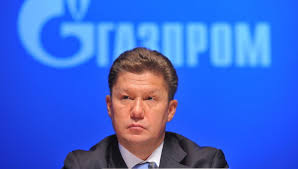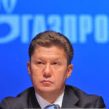
Will Poland Consider a Gas Deal with Russia at Ukraine’s Expense?
Publication: Eurasia Daily Monitor Volume: 10 Issue: 67
By:

On April 3, Russian President Vladimir Putin and Gazprom CEO Aleksei Miller proposed building a new pipeline for Russian gas through Poland to other European Union countries in Central Europe, bypassing Ukraine (see EDM, April 5). Moscow publicized the proposal—and a corresponding offer to Poland—without any prior notification to Warsaw. This move has surprised Polish authorities, provoking some contradictory reactions within the government. Some Polish officials are prepared, at least initially, to take Putin’s proposal under consideration (www.naturalgaseurope.com, accessed April 8, 9).
The gambit, more political than economic, seeks to enlist Poland into a joint Russian-Polish move against Ukraine. It aims to demonstrate that Moscow can shift gas export volumes into new bypass pipelines, away from Ukraine’s gas transit system to Europe, eventually nullifying that system’s value. Under such pressures, Ukraine is expected to hand over its transit pipelines to Gazprom—a change that would entail far-reaching adverse economic and political consequences to Ukraine’s neighbors, including Poland.
While the largest bypass threat, South Stream remains implausible with its gigantic proportions and costs, Moscow’s transit offer to Poland represents a realistic bypass threat to Ukraine, as long as Poland is seen to consider it even hypothetically. Polish ambiguity would undermine Ukraine’s position vis-a-vis Russia. To dispel that effect, which some Polish official statements have generated, the government needs to move beyond its initial equivocation, and instead answer Putin’s proposal with a definitive “no.”
This proposal, re-branded Yamal-Europe Two, takes its name from an earlier, quite different proposal, which would have added a parallel line to the Yamal-Europe One pipeline, across Belarus and northern Poland into northern Germany. What Russia now designates as the Yamal-Europe Two pipeline would run southwestward. It reiterates Moscow’s old Kobryn-Velke Kapusany proposal, named after the inception and terminus points in Belarus and Slovakia, respectively, of the proposed pipeline through Poland.
At an annual capacity of 15 billion cubic meters (bcm), the line would run some 600 kilometers through Polish territory, linking up with the Slovakian “gas highway,” which takes the bulk of Russian gas from Ukraine’s transit system onward into Central Europe. Consumer countries would receive those same 15 bcm of Russian gas via Poland, instead of Ukraine. This would not be new Russian gas; it would be the same Russian gas, re-routed.
By making it appear that the project would not harm any country other than Ukraine, and that Poland might even benefit from the new transit, Russia aims to isolate Ukraine from its neighbors and the EU.
To intimidate Ukraine—and play into the hands of Russia-leaning circles there—“Yamal-Europe Two” need not be actually implemented. Putin’s offer alone can achieve those effects, if the offer is seen to be taken under consideration by Polish decision-makers for a possible transit option.
Slovakia can hardly be expected to take an open stand against Putin’s proposal. The country’s transit pipelines, with their monumental transit capacity of more than 90 bcm annually (designed to take the flow from Ukraine onward into Europe), are already under-utilized because Gazprom itself under-utilizes Ukrainian pipelines—not yet by re-routing into bypasses, but because of depressed European demand. Some circles in Slovakia are fearful of losing further transit volumes if Russia shifts part of the flow from Ukrainian pipelines into South Stream. Those circles in Slovakia might therefore welcome the Kobryn-Velke Kapusany (Yamal-Europe Two) offer as reassuring to them, inasmuch as it promises undiminished transit volumes through Slovakia.
Thus, it is up to Poland to block Putin’s divide-and-rule proposal. Prime Minister Donald Tusk has practically precluded building this transit pipeline on Polish territory. He told the press that he had first found out from the press about the MOU’s signing, that “EuroPolGaz [which owns and operates the Yamal-Europe One pipeline and is jointly held by Gazprom and Polish state-owned PGNiG, with 48 percent of shares each] is not a Polish company,” and that Poland would not participate in any attempt to isolate Ukraine (Bloomberg, April 5; PAP, April 5, 8).
Treasury Minister Mikolaj Budzanowski (whose ministry oversees PGNiG), however, has sounded more nuanced in his multiple statements since April 3 on Moscow’s proposal. He has not ruled out implementing it in Poland, but has set conditions, to wit: any such pipeline should be built by a Polish state company; it should depend on the destination countries’ agreement with the gas volumes and price; and it should await the European Commission’s conclusion of its anti-monopoly investigation against Gazprom. Thus, it seems as if the Ukraine-bypass project is being taken under consideration (PAP, Dow Jones, Bloomberg, April 5, 8).
PGNiG CEO and EuroPolGaz deputy chair, Grazyna Piotrowska-Oliwa, has expressed considerable surprise at Gazprom’s publicity around this pipeline proposal. But that publicity was to be fully expected as part of Moscow’s orchestration of pressures on Ukraine. As an incidental effect, Moscow’s publicity has attracted unwanted critical attention to this project in Poland itself. Budzanowski and Piotrowska-Oliwa insist that an MOU is nonbinding and not necessarily followed by implementation of the project. Such answers are inadequate, however. Some MOUs are developed into binding agreements and implemented, some are not. The Polish government ought to reassure Ukraine that this one belongs in the latter category—particularly since it was signed by EuroPolGaz’s (“not a Polish company”?) CEO with Gazprom, in line with the latter’s interests, to the Polish government’s apparent surprise.




